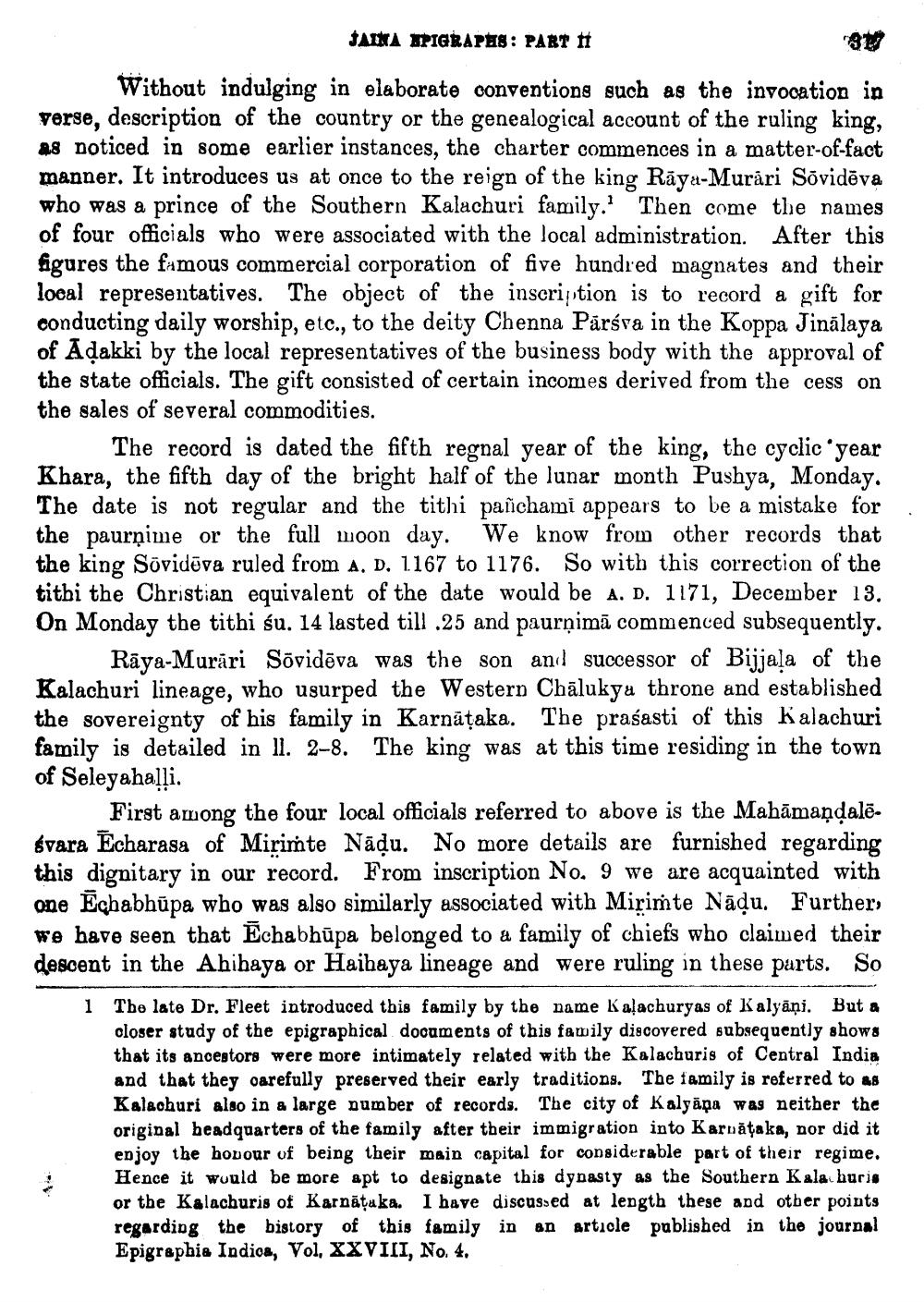________________
JAINA EPIGRAPES: PART II
317
Without indulging in elaborate conventions such as the invocation in verse, description of the country or the genealogical account of the ruling king, as noticed in some earlier instances, the charter commences in a matter-of-fact manner. It introduces us at once to the reign of the king Raya-Murâri Sōvidēva who was a prince of the Southern Kalachuri family.' Then come the names of four officials who were associated with the local administration. After this figures the famous commercial corporation of five hundred magnates and their local representatives. The object of the inscription is to record a gift for conducting daily worship, etc., to the deity Chenna Parsva in the Koppa Jinālaya of Aḍakki by the local representatives of the business body with the approval of the state officials. The gift consisted of certain incomes derived from the cess on the sales of several commodities.
The record is dated the fifth regnal year of the king, the cyclic 'year Khara, the fifth day of the bright half of the lunar month Pushya, Monday. The date is not regular and the tithi pañchami appears to be a mistake for the paurnime or the full moon day. We know from other records that the king Sōvideva ruled from A. D. 1167 to 1176. So with this correction of the tithi the Christian equivalent of the date would be A. D. 1171, December 13. On Monday the tithi śu. 14 lasted till .25 and paurņima commenced subsequently. Raya-Murari Sōvideva was the son and successor of Bijjala of the Kalachuri lineage, who usurped the Western Chalukya throne and established the sovereignty of his family in Karnataka. The prasasti of this Kalachuri family is detailed in I. 2-8. The king was at this time residing in the town of Seleyahalli.
First among the four local officials referred to above is the Mahamaṇḍalē. svara Echarasa of Mirimte Nadu. No more details are furnished regarding this dignitary in our record. From inscription No. 9 we are acquainted with one Echabhupa who was also similarly associated with Mirimte Naḍu. Further, we have seen that Echabhupa belonged to a family of chiefs who claimed their descent in the Ahihaya or Haihaya lineage and were ruling in these parts. So
1 The late Dr. Fleet introduced this family by the name Kalachuryas of Kalyani. But a closer study of the epigraphical documents of this family discovered subsequently shows that its ancestors were more intimately related with the Kalachuris of Central India and that they carefully preserved their early traditions. The family is referred to as Kalachuri also in a large number of records. The city of Kalyana was neither the original headquarters of the family after their immigration into Karnataka, nor did it enjoy the honour of being their main capital for considerable part of their regime. Hence it would be more apt to designate this dynasty as the Southern Kalachuris or the Kalachuris of Karnataka. I have discussed at length these and other points regarding the history of this family in an article published in the journal Epigraphia Indies, Vol, XXVIII, No. 4.




